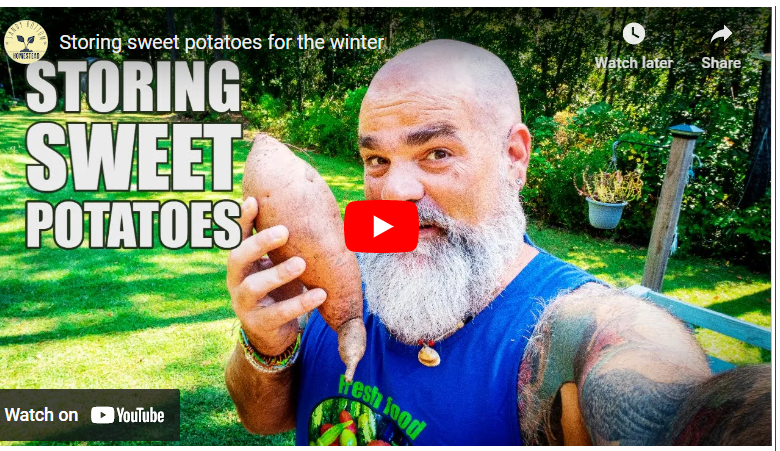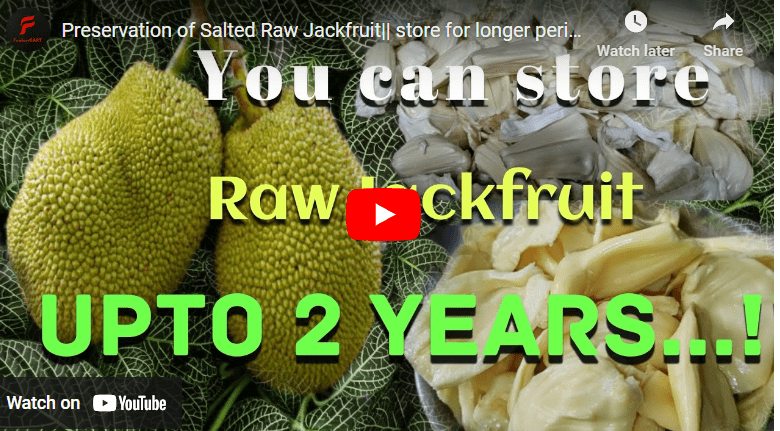Flour is a staple ingredient in many baked goods, from bread and cakes to pastries and cookies. While regular all-purpose flour is the most commonly used flour in baking, there are many different types of flour available that can be used to achieve different textures, flavors, and properties in baked goods.
Processing potatoes flour is a simple process that can be accomplished by first peeling the potatoes and then grating them on a cheese grater. Once the potatoes are grated, spread the potatoes evenly onto a baking tray and bake in a pre-heated oven at 350 degrees Fahrenheit for about 20 minutes. Once the potatoes are cooked, place them in a food processor and process until a fine flour is achieved. The processed potatoes flour can then be used in a variety of recipes.
How To Process Potatoes Flour Step By Step Guide
Potatoes flour is a versatile and nutritious ingredient that can be used in various dishes, from baked goods to soups and stews.
It is also a great option for those who are gluten-free or looking for a low-carb alternative to traditional wheat flour.
We will provide you with step-by-step instructions on how to process potatoes flour.
Read Also: How to Preserve Yam for Long-Time Storage
Step 1: Choosing The Right Potatoes
To make quality potatoes flour, you need to start with the right type of potatoes. Russet and Yukon Gold potatoes are the best for making flour due to their high starch content. When selecting your potatoes, choose firm and unblemished ones that are free from sprouts or green spots.
Step 2: Cleaning And prepare The Potatoes
Before processing the potatoes, you need to clean and prepare them. Begin by washing the potatoes under running water to remove any dirt or debris. Use a vegetable brush to scrub away any stubborn dirt.
Read Also: How To Preserve Spring Onions For Long Time Storage
Next, peel the potatoes using a vegetable peeler. Cut the potatoes into small pieces and rinse them again under running water to remove any remaining dirt or starch.
Step 3: Processing the potatoes
There are different methods of processing potatoes into flour, including using a food processor, blender, or dehydrator. We will outline two of the most popular methods below.
Read Also: How To Process Cashew Nuts At Home
Method 1: Food Processor
- Begin by placing the small pieces of potatoes into a food processor.
- Pulse the potatoes until they are finely ground.
- Next, spread the ground potatoes onto a baking sheet and place them in an oven preheated to 150°F to dry out the potato granules.
- Once the granules are dry, remove them from the oven and let them cool completely.
- Transfer the cooled granules back to the food processor and pulse them again until you have a fine flour-like consistency.
- Sift the flour through a fine-mesh sieve to remove any remaining lumps or pieces of potato.
Read Also: How To Process Cassava to Garri
Method 2: Dehydrator
- Begin by placing the small pieces of potatoes onto a dehydrator tray.
- Set the dehydrator to 125°F and let the potatoes dry for 8-12 hours or until completely dry.
- Once the potatoes are dry, transfer them to a blender or food processor and pulse until they are finely ground.
- Sift the flour through a fine-mesh sieve to remove any remaining lumps or pieces of potato.
Read Also: How To Process Coconut Oil
Step 4: Storing potatoes Flour
To keep your potatoes flour fresh for longer, store it in an airtight container in a cool and dry place. You can also keep the flour in the refrigerator or freezer to extend its shelf life.
Using Potatoes Flour
Potatoes flour can be used in a variety of dishes, including baked goods, soups, stews, and sauces. It is especially useful for gluten-free and low-carb recipes. Here are a few recipe ideas to get you started:
Read Also: How To Process Maize Into Flour
Gluten-Free Bread:
In a mixing bowl, combine 2 cups of potatoes flour, 1 tsp of baking powder, 1 tsp of salt, and 1 tbsp of sugar.
Add 2 beaten eggs, 1 cup of milk, and 2 tbsp of melted butter, and mix until well combined.
Pour the batter into a greased loaf pan and bake at 350°F for 40-45 minutes, or until golden brown.
Potato Soup:
- In a large pot, sauté 1 diced onion and 2 minced garlic cloves in 2 tbsp of olive oil until fragrant.
- Add 4 cups of chicken or vegetable broth, 4 diced potatoes, and 2 bay leaves to the pot.
- Bring the soup to a boil and then reduce heat to low and simmer for 20-25 minutes, or until the potatoes are soft.
- Remove the bay leaves and use an immersion blender to blend the soup until smooth.
- Stir in 1 cup of heavy cream, salt, and pepper to taste.
Read Also: How to Process Millet into Flour
Mashed Potatoes:
- Peel and dice 4-5 potatoes and boil them in salted water until they are tender.
- Drain the potatoes and mash them with a potato masher or fork.
- Stir in 1/4 cup of potatoes flour, 1/4 cup of milk, and 2 tbsp of butter.
- Season the dish with salt and pepper to your liking
Benefits Of Processing Potatoes Flour
Processing potatoes flour has numerous benefits that make it an excellent ingredient to have in your kitchen. Here are some of the benefits of processing potatoes flour:
- Gluten-free: Potatoes flour is naturally gluten-free, making it an excellent alternative for individuals with celiac disease or gluten intolerance.
- Low-carb: Potatoes flour has a lower carbohydrate content compared to traditional wheat flour, making it an excellent option for individuals following a low-carb diet.
- Nutritious: Potatoes are a good source of fiber, vitamins, and minerals such as potassium and vitamin C. By processing potatoes into flour, you retain these nutrients, making potatoes flour a nutritious ingredient to use in your recipes.
- Versatile: Potatoes flour can be used in a variety of recipes, including baked goods, soups, stews, and sauces. It is a versatile ingredient that can add a unique flavor and texture to your dishes.
Read Also: How To Process Okpa Flour
Disadvantages Of Processing Potatoes Flour
While processing potatoes flour has many benefits, there are also some disadvantages to keep in mind. Here are some of the disadvantages of processing potatoes flour:
- High in calories: Potatoes flour is high in calories compared to traditional wheat flour. One cup of potatoes flour contains approximately 160 calories, while one cup of wheat flour contains only 120 calories.
- Expensive: Potatoes flour can be more expensive than traditional wheat flour. The cost of potatoes flour varies depending on the brand and the location where it is purchased.
- Limited availability: Potatoes flour may not be readily available in all stores, and some individuals may need to order it online or visit specialty stores to find it.
Read Also: How To Process Palm Kernel Oil
Risks Of Processing Potatoes Flour
While processing potatoes flour at home is generally safe, there are some risks to be aware of. Here are some of the risks associated with processing potatoes flour:
- Contamination: If the potatoes used to make the flour are contaminated with harmful bacteria, it can lead to foodborne illnesses. To reduce the risk of contamination, it is important to choose fresh and clean potatoes, wash them thoroughly, and store them properly.
- Allergies: Some individuals may have an allergy to potatoes. If you or someone in your household has a potato allergy, it is important to avoid using potatoes flour or any other products containing potatoes.
- Overconsumption: Like any other food, overconsumption of potatoes flour can lead to weight gain and other health problems. It is important to use potatoes flour in moderation as part of a balanced diet.
Read Also: How To Process Pepper
How To Use Potato Flour
Potato flour is a versatile ingredient that can be used in a variety of recipes. Here are some ways to use potato flour:
- Thickening agent: Potato flour can be used as a thickening agent in soups, stews, and sauces. It is especially useful for gluten-free recipes that require a thickening agent.
- Baking: Potato flour can be used in baking to add moisture, texture, and flavor to baked goods. It can be used in a variety of recipes, including bread, cakes, cookies, and pastries.
- Gluten-free recipes: Potato flour is an excellent alternative to wheat flour in gluten-free recipes. It can be used in a variety of recipes, including pancakes, waffles, and pizza crusts.
- Coating: Potato flour can be used as a coating for meat, fish, and vegetables. It adds a crispy texture to the food when fried or baked.
Read Also: How To Process Plantain Flour
How To Make Poundo Potato Flour
Poundo potato flour is a popular Nigerian dish made from potato flour. Here is how to make it:
Ingredients:
- 2 cups of potato flour
- 2 cups of water
- Salt (to taste)
Instructions:
- Bring the water to a boil in a pot.
- Add the potato flour and stir vigorously with a wooden spoon until it forms a dough.
- Cover the pot and let the dough cook for 5-7 minutes on low heat.
- Remove from heat and knead the dough until it is smooth.
- Divide the dough into small balls and roll each ball into a flat disc.
- Serve with soup or stew.
Potato Flour Recipes
Potato Flour Bread
Ingredients:
- 3 cups of all-purpose flour
- 1 cup of potato flour
- 1 tbsp of active dry yeast
- 2 tbsp of sugar
- 1 tsp of salt
- 1 1/2 cups of warm water
- 1/4 cup of vegetable oil
Instructions:
- In a large bowl, mix together the all-purpose flour, potato flour, active dry yeast, sugar, and salt.
- Add the warm water and vegetable oil to the bowl and stir until a dough forms.
- Knead the dough for 10-15 minutes until it is smooth and elastic.
- Cover the dough with a damp cloth and let it rise in a warm place for 1 hour.
- Preheat the oven to 375°F.
- After allowing the dough to rise, press it down firmly and form it into the shape of a loaf.
- Place the dough in a greased loaf pan and let it rise for another 30 minutes.
- Bake for 30-35 minutes, or until the bread is golden brown.
- Take the bread out of the oven and allow it to cool before cutting it into slices.
Can I Substitute All Purpose Flour For Potato Flour
While all-purpose flour and potato flour are both used in baking, they are not interchangeable.
All-purpose flour is made from wheat, while potato flour is made from dehydrated potatoes. The two flours have different textures, flavors, and properties, which can affect the outcome of a recipe.
All-purpose flour is a versatile flour that is commonly used in baking. It contains gluten, which gives baked goods their structure and elasticity. All-purpose flour is also a good source of protein and carbohydrates.
Potato flour, on the other hand, is a gluten-free flour that is often used in gluten-free baking. It is made from dehydrated potatoes that have been ground into a fine powder. Potato flour has a light, fluffy texture and a slightly sweet flavor.
If a recipe specifically calls for potato flour, it is not recommended to substitute all-purpose flour. The properties of potato flour are unique and cannot be replicated with all-purpose flour.
Similarly, if a recipe calls for all-purpose flour, substituting potato flour can drastically change the texture and taste of the baked goods.
What Is The Difference Between Potato Flour And Regular Flour
Potato flour and regular flour are two different types of flour that have different properties and uses in baking.
Regular flour, also known as all-purpose flour, is made from wheat that has been milled and refined. It is a versatile flour that can be used in a variety of recipes, including bread, cakes, and pastries. Regular flour contains gluten, which gives baked goods their structure and elasticity.
Potato flour, on the other hand, is made from dehydrated potatoes that have been ground into a fine powder. It is a gluten-free flour that is often used in gluten-free baking. Potato flour has a light, fluffy texture and a slightly sweet flavor. It is often used as a thickening agent in soups, stews, and sauces, as well as a coating for meat, fish, and vegetables.
The main difference between potato flour and regular flour is their gluten content. Regular flour contains gluten, while potato flour does not. This means that regular flour is not suitable for people with gluten sensitivities or celiac disease, while potato flour is a safe alternative.
In terms of baking, regular flour is a versatile flour that can be used in a variety of recipes, while potato flour is more specialized and is typically used in gluten-free baking. However, potato flour can be used in a variety of recipes to add moisture, texture, and flavor to baked goods.
Conclusion
Processing potato flour at home is a simple and cost-effective way to add a versatile and nutritious ingredient to your cooking and baking. By choosing the right potatoes, cleaning and preparing them, and using one of the processing methods outlined above, you can easily make your own potatoes flour. So, give it a try and see what delicious creations you can make.




